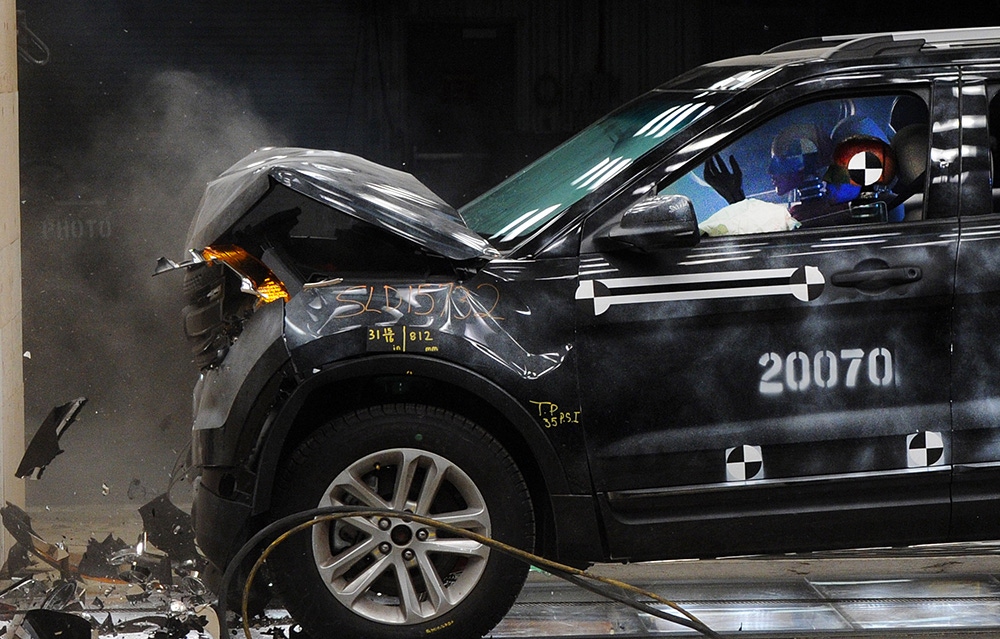Ford Increasing Virtual Crash-Test CapabilityFord Increasing Virtual Crash-Test Capability
Ford began live crash testing in 1954, 12 years before it was required by the government. The automaker to date has executed 31,000 crash tests globally at four different facilities.

DEARBORN, MI – Ford has increased the computing power needed to virtual crash-test vehicles by 50%, but its unlikely physical vehicle testing will cease anytime soon, says a top engineer.
Steve Kenner, global director-automotive safety office, says government regulations require physical crash testing to verify a vehicle, and changing those requirements is difficult.
“(In) most of the countries that have European regulatory framework you have to do whole vehicle approval and have tests witnessed by a witness authority,” he tells WardsAuto during a recent event here. “That’s one of the obstacles to faster adaptation of using just computer models to demonstrate compliance.”
He notes virtual crash-test dummies also would need to be developed to simulate the capabilities of physical models.
The automaker’s investment in computing power has led to a tenfold increase in the number of virtual crash tests it can conduct during vehicle development. The level of detail on the models has increased as well. Safety teams now can run full-vehicle crash simulations with up to 2 million elements, up from half a million five years ago.
Physically crash-testing a vehicle takes weeks of preparation and dozens of engineers who must equip it and dummies with sophisticated sensors and other crash-force measuring devices.
During a live crash test, onboard systems capture up to 300 channels of information, including crash forces, displacement and pressure. Up to 30 high-speed digital cameras are used per test. Engineers are able to decipher crash data within a half-hour of the test.
Ford began live crash testing in 1954, 12 years before it was required by the government. The automaker to date has executed 31,000 crash tests globally at four different facilities.
At the facility here, more than 20,000 tests have been conducted with two to three occurring daily. The building contains two, 600-ft. long (183-m) fully enclosed runways with tow cables that can propel vehicles in excess of 55 mph (86 km/h).
Although physical tests will be required in the near future, virtual crash tests are remarkably accurate, Kenner says.
“The computing power and ability to predict the outcome of the crashes is quite good,” he says. “We’ve increased the computing power because with all the products and variances we have, we have to make sure we meet every single regulation.”
Due to the One Ford plan, which focuses on offering products in nearly all global markets, meeting varying government safety regulations can be tricky, Kenner says.
While there has been some movement to come up with a common set of global safety standards, today they remain fractured, with most countries adopting U.S. or European regulations, while others use a mixture of the two.
“As we work on these global products we have to make sure they can meet all regulatory and public-domain testing requirements for the markets they’re going to,” Kenner says. “This facility has the expertise to be able to do testing on global products with all global regulations.”
The facility currently is conducting final crash tests on the upcoming ’15 F-150 pickup, which will feature an aluminum-intensive body.
Kenner says the F-150 is undergoing, and passing, the same tests steel-bodied vehicles are subjected to.
“We did appropriate testing,” he says. “We have pretty thorough test protocol and this vehicle is going through the entire protocol consistent with developing the level of safety of all our vehicles.”
About the Author
You May Also Like

